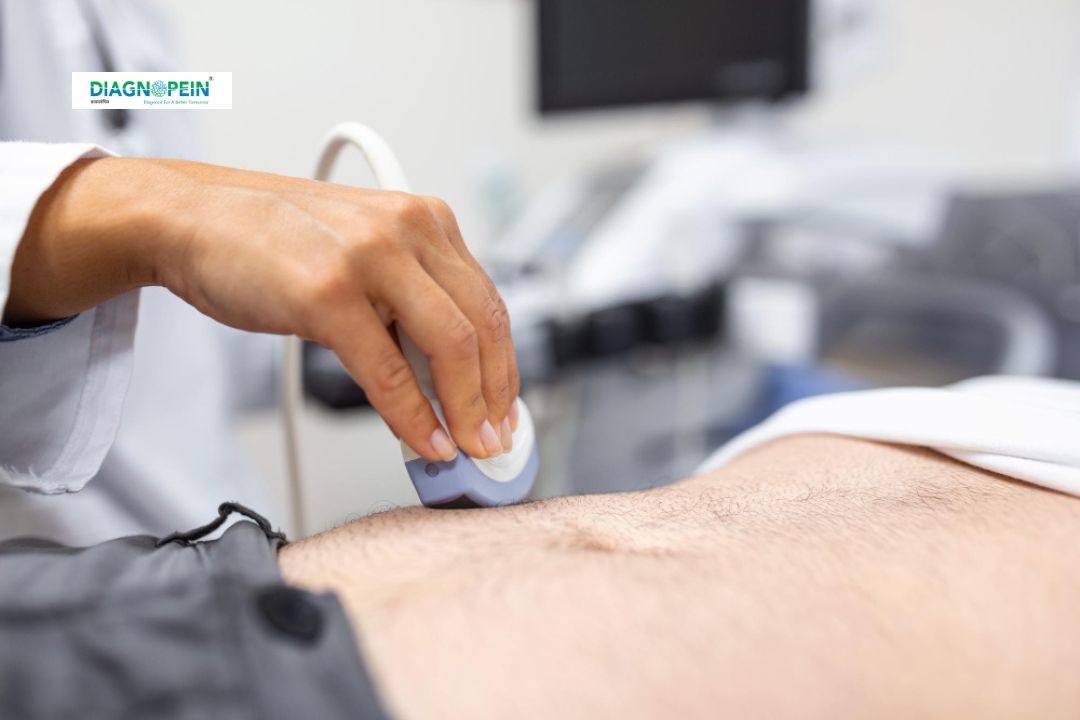Why is USG B/L Inguinal Region Done?
The USG B/L Inguinal Region scan is advised for multiple reasons, especially when patients report discomfort or suspect hernias in the groin muscles. Some of the key indications include:
-
Detection and evaluation of inguinal hernia on both sides
-
Assessment of inguinal lymph nodes for infections or malignancy
-
Investigation of fluid collection, abscess, or hematoma in the groin
-
Evaluation of post-surgical complications or swelling after hernia repair
Doctors recommend USG B/L Inguinal Region for early and precise detection, guiding further treatment. As it is radiation-free, this procedure is suitable for adults, children, and pregnant women alike.
Benefits of USG B/L Inguinal Region
The USG B/L Inguinal Region offers several advantages:
-
Non-invasive and painless procedure requiring no incisions
-
Real-time imaging helps assess blood flow, tissue texture, and hernia motion during strain
-
Safe and radiation-free, making it suitable for repeated use
-
Quick and cost-effective, providing results within minutes
-
Accurate differentiation between soft-tissue masses, lymph nodes, and hernias
This simple and effective diagnostic tool aids doctors in confirming hernial sac movements, identifying trapped loops, and ruling out complications. The detailed images provided by USG B/L Inguinal Region make it one of the most trusted methods for evaluating groin disorders.
How the USG B/L Inguinal Region Test is Done
The USG B/L Inguinal Region scan is performed by a trained radiologist or sonologist in a diagnostic center or hospital. The steps include:
-
The patient lies comfortably on an examination table.
-
A clear, water-based gel is applied over the groin area to ensure smooth movement of the ultrasound probe.
-
The transducer (ultrasound probe) is moved gently over the inguinal regions on both sides.
-
Real-time images are displayed on a monitor, showing detailed internal structures.
-
The doctor may ask the patient to strain or cough to better observe hernia movement if present.
The procedure takes about 10 to 15 minutes and requires no fasting or special preparation. After the scan, the patient can resume normal activities immediately. The radiologist then analyses and interprets the findings to prepare a diagnostic report.
Scan Parameters for USG B/L Inguinal Region
The quality and accuracy of USG B/L Inguinal Region depend on certain parameters such as:
-
High-frequency linear probe (7–12 MHz) for detailed soft-tissue imaging
-
Real-time dynamic imaging during strain or Valsalva maneuver
-
Bilateral comparative evaluation of the left and right inguinal canals
-
Color Doppler usage for assessing vascularity or inflammation
By focusing on these parameters, the examiner ensures a thorough analysis of the groin structures, identifying even subtle hernias or lymph node changes.
Conclusion
USG B/L Inguinal Region is a highly reliable imaging technique to examine both sides of the groin for hernias, lymph node enlargements, or other abnormalities. Its safety, accuracy, and speed make it a preferred diagnostic tool. Early evaluation through this ultrasound aids in preventing complications and enables timely medical intervention.
If you’re experiencing groin pain, swelling, or a suspected hernia, booking a USG B/L Inguinal Region today can help you get the right diagnosis and effective treatment plan.









